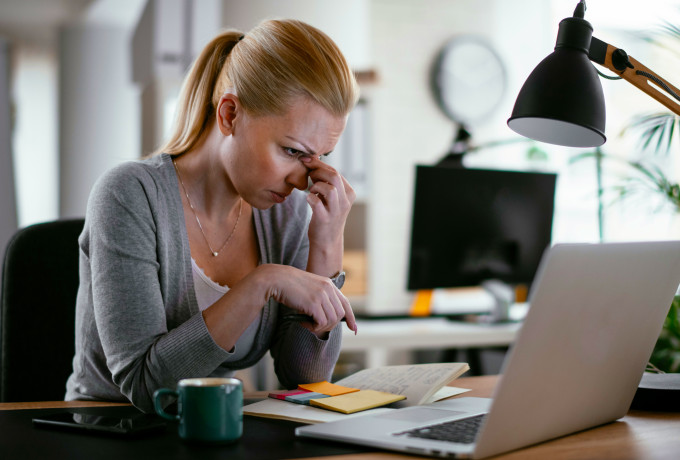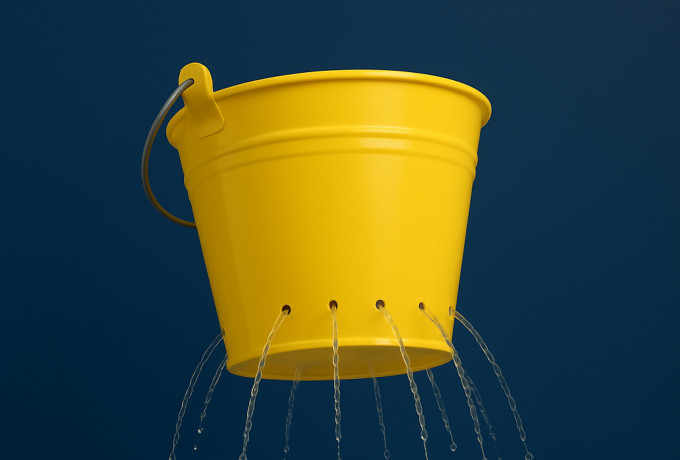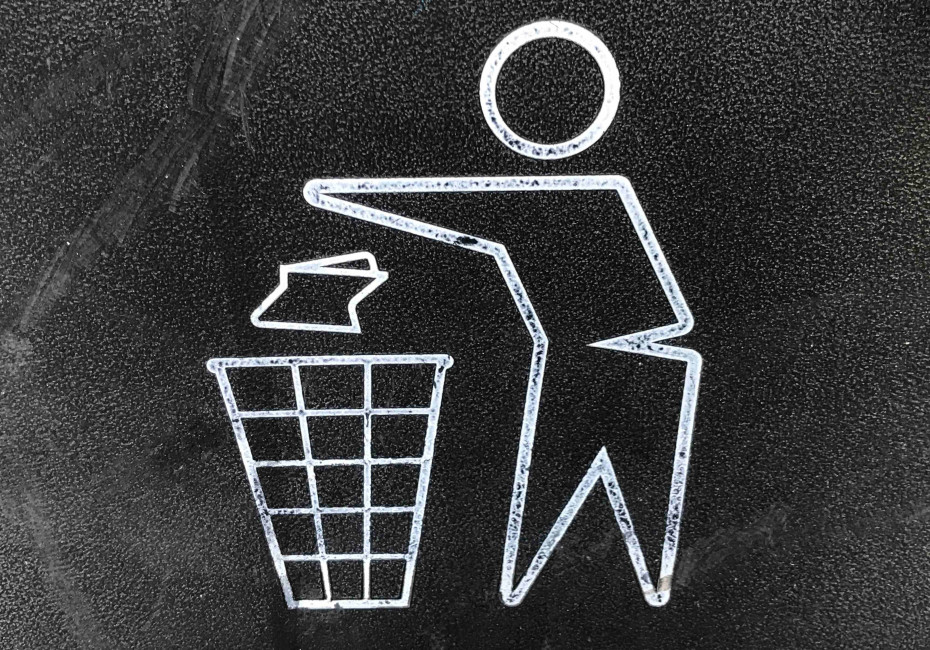Related services
We're not just another creative studio; we're champions of sustainability and are passionate about minimising the impact of our projects and helping businesses around the world make the transition towards eco-friendly design.
In this article, we'll delve into the world of sustainable food and drinks packaging, exploring the importance of environmentally responsible packaging, innovative materials and the latest trends.
Sustainable food packaging is about more than just looks or functionality; it's an important step towards safeguarding our planet. It minimises waste, conserves precious resources, protects the environment, reduces emissions, combats litter, upholds ethical responsibility and adds value to your brand.
What’s the status?
Every day, a staggering amount of food packaging waste is generated contributing to a significant environmental burden. ‘Lunch on the go’ is estimated to generate 11 billion items of packaging waste annually and single-use plastic packaging, notorious for its environmental impact, continues to account for a terrifying proportion of our daily waste (around 80% of all plastic packaging waste is from food and drink) - this could be as much as 220 metric tons a year! - and reportedly, less than 10% of our everyday plastic is recycled). As we all know, some of this plastic is finding its way into our oceans and releasing micro-plastics into the environment whilst a great deal more is incinerated or dumped abroad.
So we’re all agreed, it’s nasty stuff and, as a nation, we’re not very good at recycling - so what can be done?
Greenpeace
We’ve established that single-use plastics have a variety of negative consequences and by embracing alternatives like reusable materials and compostable options, we can mitigate the impact of our food packaging.
What are the challenges of making the switch to more sustainable packaging?
The major challenge for the food and drinks industry is that of cost. Until the use of recycled or bio-materials becomes industry standard, the scale of economy just isn't there to compete against traditional packaging routes. For a market that is dominated by slim margins, even a small increase in costs can be a big deal.
Interestingly however, studies suggest that as much as 86% of people are willing to pay more for their products if the items are in recyclable, reusable, or refillable packaging so maybe there's some wiggle room to accommodate this increase in costs.
Another big challenge is that any switch to a more eco-friendly material must achieve the same protective qualities as their existing non-sustainable solutions. Any decline in this area could not only be seen as a negative by consumers but would also contribute to greater food waste which is swapping one environmental issue with another (and the carbon footprint of the product itself is typically much higher than that of the packaging).
Taking Responsibility for Recyclability and Biodegradability
Understanding how different materials can be reused or biodegrade is crucial. Opt for materials like paper, card and bio-alternatives for shorter biodegradation times or paper, card, glass, aluminium and steel for easy recyclability. You can also ensure that packaging is more easily recyclable by avoiding complex combinations or excessive coatings that are difficult to separate during the recycling process. Finally, it’s important to make sure to communicate clearly with consumers about proper recycling practices - to help with this, WRAP have produced some handy guidelines for designers here.

Innovative Example
Innovative chocolate brand Seed & Bean became the first UK chocolate brand to have fully compostable packaging. Their inner foil is made from Natureflex™, a flexible cellulose film made from eucalyptus wood pulp.
Using Recycled Materials
Using materials that have already been recycled offers a sustainable solution by conserving resources, promoting energy efficiency, diverting waste from landfills, lowering pollution, and enhancing your brand image. A range of recycled materials, from paper and card to plastics and reclaimed wood are readily available and we have always championed both recycled and recyclable options with our customers.
Compared to virgin paper for example, the production of recycled stock uses around 50% less energy and can save 1.32 tonnes of CO2e per tonne.

Innovative Example
Companies like Reuseabox have even thought about how you can reduce your impact when packaging for wholesale delivery by re-using boxes collected from other organisations.
Compostables and Bio-alternatives
Bioplastics, derived from renewable sources like cornstarch, sugarcane, gelatine and seaweed, are paving the way for eco-friendly packaging solutions. During the design process you can also explore options like paper, card, bamboo, wood and natural fibres while also considering new-age alternatives like creative edible packaging made from seaweed or rice.
Plastic linings on food-safe packaging can now also be replaced with bio-alternatives to make lined, paper-based packaging fully recyclable.

Innovative Example
We love this example from The Good Cup, providing an innovative solution to the problem of takeaway coffee cups by removing the plastic lid out of the equation altogether. (Standard plastic lids can take up to 200 years to decompose!).
Sustainability by Design
Design plays a crucial role in the sustainability of your product’s packaging. Efficiency and minimalism help reduce material usage, designing for neat-stacking means less/smaller boxes during transport, packaging that can actively extend product life prevents food waste and lightweight packaging cuts down on fuel usage during transport.
Other neat design tricks like resealable and reusable packaging and compostable films are all innovative design elements that you can consider.
Compostable materials also present other opportunities such as plantable packaging containing wildflower seeds - this gives a secondary use to your packaging whilst adding extra value and enjoyment for your customers.
Future Trends
Staying ahead of the curve with emerging sustainable packaging technologies is a must for any packaging designer as new, innovative solutions are announced regularly. Biodegradable, edible and ‘smart packaging’ (with sensors indicating freshness), ‘active/intelligent packaging’ (extending the life of a product through antimicrobial agents), reusable packaging, bioplastics and zero-waste solutions are all shaping the future of our supermarket experiences. Supply chain transparency and authenticity are also becoming a key customer value - this includes fair-trade, organic, anti-slavery and sustainable ingredients.
How do I get started using sustainable materials for my packaging?
Contact your current manufacturer to see what alternative materials they stock or can source on your behalf. If they come up short, there are plenty of packaging providers and specialists providing bio-packaging, recycled packaging and other sustainable options emerging on the market. Do your research, set up a call, get samples and see what they can offer - for many, there will even be off-the-shelf products just waiting for you to discover.
You should also consider how ethical and environmentally friendly your suppliers are too. Check their website's footer for an ISO 14001 accreditation - this is an internationally agreed standard for an environmental management system that ensures manufacturers have efficient systems in place to manage their resources and waste.
An FSC accreditation will ensure that your paper provider is importing their materials from sustainably managed forests.
There are also many B-Corps and carbon-balanced producers out there that are dedicated to sourcing materials ethically and offset their carbon footprint using trusted organisations such as the World Land Trust. You can see a list of carbon balanced printers here.
Below are a few sustainable packaging providers to get you started!
Grounded - plantmade, wastemade and papermade packaging
Woolcool - insulated food packaging using wool
Reuseabox - reuse courier boxes before they're recycled
The Good Cup - takeaway coffee cups without the plastic lid
Packhelp - a range of paper-based packaging solutions
Enviropack - off-the-shelf food & drink packaging
Green Man - more off-the-shelf food & drink packaging
BioPak - even more off-the-shelf food & drink packaging!
Decent Packaging - no excuses now
In conclusion
It’s clear that sustainable food and drinks packaging is not only an ethical choice but a smart one. Embrace eco-friendly packaging and encourage your customers to do the same.
Whilst many are campaigning for the government to ban single use plastic packaging, the reality is that the responsibility is shared with producers and designers alike. Why wait for legislation to force your hand when you can make a difference today?
From a consumer perspective we all need to do our best to shop locally and seasonally, avoid over-buying to reduce food waste and say no to excessive plastic packaging to encourage the big food producers to get with the programme.
Together, we can make a difference in protecting our environment, one package at a time.
Root Studio is dedicated to helping businesses achieve more from their packaging and print, if you would like to discuss a new packaging project with us then get in touch.
For more news follow us @rootstudiouk
Similar posts

In a world crammed with endless scrolling, pop-ups, flashing offers and ‘read more’ rabbit holes, the real competition isn’t just other businesses - it’s cognitive overload.

Most websites don’t have a traffic problem - they have a conversion problem. Conversion Rate Optimisation (CRO) is simply about spotting issues and opportunities and gently guiding more of your visitors to take action.

